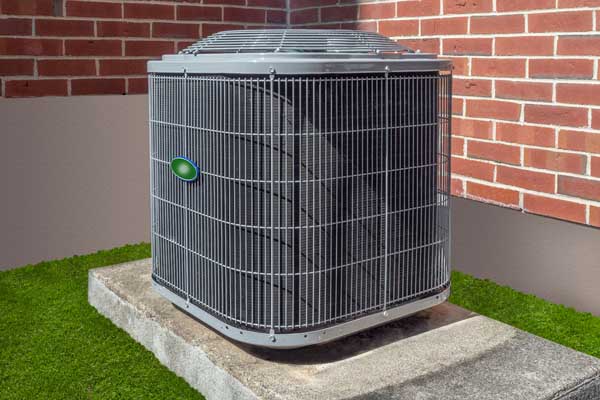What is a High-Velocity Mini Duct Air Conditioning System?

A high-velocity mini duct air conditioning system is an innovative HVAC system that offers both heating and cooling. This article discusses what this system is, how it operates, its advantages and disadvantages, and other important information. Keep reading to learn more.
What Kind Of HVAC System Is A High-Velocity Mini Duct Air Conditioning System?
Contents
A high-speed, compact HVAC unit, like a high-velocity mini duct system, utilizes small, flexible ducts to circulate cool air throughout a structure. Unlike conventional HVAC systems that use large ducts and vents, mini-duct systems have ducts that are about 2 to 4 inches in diameter. This results in higher efficiency and air pressure, similar to a turbocharger in a car.
These small ducts are easy to install on floors, walls, or ceilings. They are ideal for retrofitting existing buildings. The high-velocity airflow that these systems produce lets them deliver cold air quickly and efficiently, so there is no need for large ducts.
Moreover, small ductwork is made to be energy efficient. For example, these systems use less air to cool a space, allowing them to work with reduced power consumption than conventional HVAC systems.
Related Article: 7 Must-Have Accessories to Improve HVAC Performance
How Does A High-Velocity Mini Duct Air Conditioning System Work?

A high-velocity mini duct air conditioning system distributes cold air throughout your home or business using a combination of high-velocity air and small, flexible ducts.
The system starts with a small air handler that pulls warm air from inside and pushes it through a heat exchanger to cool it. The cold air is then forced into the mini ducts at high speed, usually around 2,000 feet per minute. This results in the cold air mixing with the warm air in the room to create a uniform temperature.
The mini ducts are generally made of flexible, insulated tubes that are only several inches in diameter. This feature makes them easy to install in ceilings, walls, or floors. The ducts’ small size also means that system installation can be done without extensive modifications or renovations to your home or building.
Air is delivered at a high velocity, allowing it to be distributed over longer distances and via smaller ducts. This makes it possible to cool rooms traditional HVAC systems may not reach. In addition, the high velocity of the air helps remove drafts and hotspots so the building can enjoy a more comfortable and consistent temperature.
Generally, a high-velocity mini duct system is an effective and efficient cooling method, especially in scenarios where conventional HVAC units aren’t a practical or effective option.
Related Article: How HVAC Comfort Zones Cut Energy Costs
Pros & Cons Of A High-Velocity Cooling System

Keep reading to learn some of the pros and cons of these types of HVAC systems.
Pros of a High-Velocity Cooling System
Here are several benefits of a high-velocity mini-duct air conditioning system:
- Easy installation: The ducts are small and flexible, so they can be installed easily and quickly in existing buildings. They don’t require extensive renovations or modifications.
- Consistent temperature: These systems deliver air at a high velocity, helping eliminate hotspots and drafts. This creates a more comfortable and consistent temperature throughout the building.
- Energy efficiency: High-velocity systems utilize less energy than traditional HVAC units thanks to smaller ducts and using less air to reach the same cooling effect. This can result in reduced energy bills as time passes.
- Space-saving: These systems use small-sized ducts, so they can be installed in tight or hidden spaces. They are ideal for structures with limited space.
- Quiet operation: High-velocity systems are usually quieter than traditional HVAC systems because small, high-velocity ducts generate less noise.
- Improved air quality: These systems are less prone to leaks and other problems that can negatively impact the air quality due to their smaller ducts. This is a particularly crucial feature for individuals with allergies or respiratory issues.
If you are searching for an effective, efficient, and easy-to-install air conditioner, this type of system can be an excellent choice. They can be customized to fit various building types and sizes.
Related Article: Key Differences Between HEPA & MERV Filters
Cons Of A High-Velocity Mini Duct Air Conditioner
This type of HVAC system has many advantages, but it also has several potential drawbacks:
- Cost: A high-speed mini HVAC system can be more expensive than traditional HVAC systems because of its specialized equipment and installation requirements.
- Maintenance: These systems must be maintained regularly to ensure the small ducts remain clean and blockage-free. This procedure can be harder and more time-consuming than traditional HVAC system maintenance.
- Noise: High-flow air conditioners generally produce less noise than traditional HVAC systems. However, they still emit some noise because of the air’s high velocity as it flows through the small ducts.
- Limited capacity: A high-velocity system may not be suitable for larger structures because they may not be able to deliver sufficient cold air to meet the demand.
- Installation requirements: The small ducts these systems use make them easy to install. However, they still need to be planned and installed carefully to ensure they work effectively and efficiently.
- Aesthetics: Small vents in turbocharged tiny duct systems may not be as visually pleasing as conventional HVAC systems. This can be a concern to some individuals.
Some buildings may find high-velocity HVAC systems to be an excellent cooling option. However, it is crucial to consider the possible cons and pros before deciding if this is the correct choice.
Related Article: How Can UV Lights Improve Your HVAC System?
Conclusion
The innovative high-velocity mini-duct HVAC system offers many benefits, such as energy efficiency, better air quality, less noise, and even heating and cooling. However, you should also consider some drawbacks, like the installation cost and the need for regular HVAC maintenance.
Ultimately, the homeowner’s specific needs and preferences should dictate if you should install a high-velocity mini duct system in your home. Consult a qualified HVAC technician, like Point Bay Fuel, to find out if this type of system is the most suitable choice for your home.
Related Article: How Does Your HVAC Affect Your Skin?
Call Point Bay Fuel For All Your HVAC Requirements

Contact Point Bay Fuel for trusted heating and cooling services in Ocean County and Monmouth County, New Jersey. Our team of skilled and certified technicians are experts in HVAC replacements, installations, repairs, tune-ups, and more. By working with us, you can expect top-quality services.
Point Bay Fuel provides competitive pricing for our services because we understand how vital it is to have a comfortable and energy-efficient home. Our maintenance services can improve your comfort while reducing your energy expenses. If you need your HVAC unit replaced or repaired, our knowledgeable technicians can recommend the best solution within your budget. We offer a satisfaction guarantee in all our work.
Call us today to schedule a service appointment. We offer free, in-home estimates so that you can make informed decisions regarding your HVAC systems. Rest assured, Point Bay Fuel provides superior heating and cooling services that will exceed your expectations!
Contact us now by calling (732) 349-5059 to speak to one of our home comfort specialists! Click the link to view our service area.
